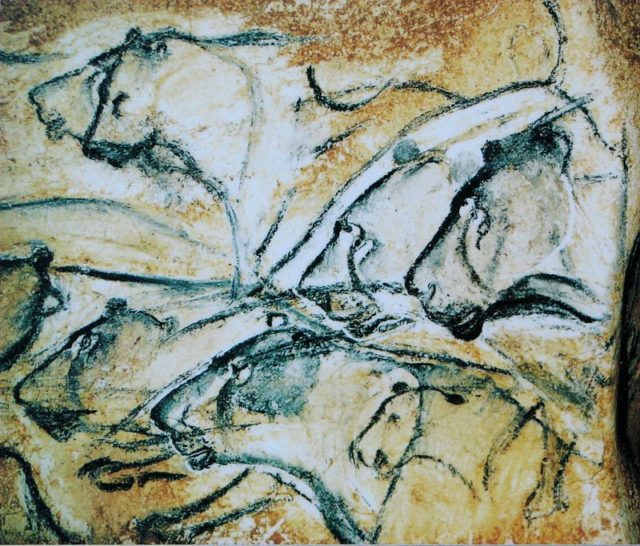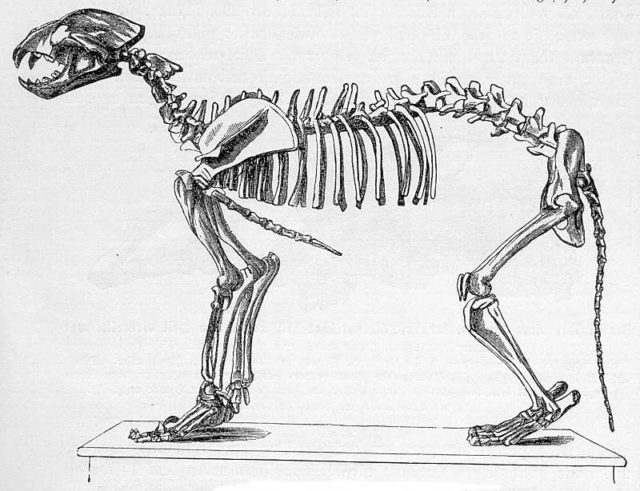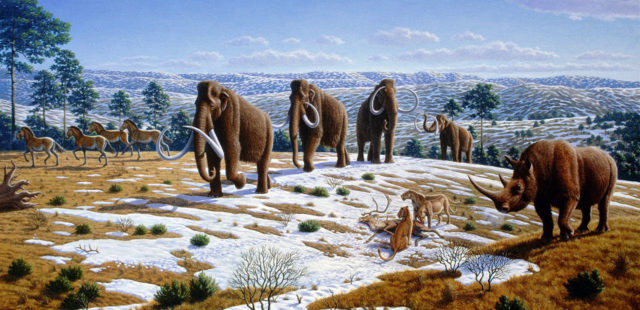In modern times, lions symbolize power and courage for their dominance in the wild. Global efforts have helped prevent the species from becoming endangered or extinct, yet they are still vulnerable. Their prehistoric relatives were not as fortunate.
The Eurasian cave lion, most closely related to the modern lion species and the largest lion species to ever have lived, roamed the Bering land bridge from Europe to Alaska until its extinction 14,000 years ago. What is known about the lion has been garnered from fossils and prehistoric art-like etchings on cave walls, created by Upper Paleolithic humans. Based on a fossil found in Germany, an adult Eurasian cave lion was measured at 3.9 feet tall and 6.9 feet long without its tail – a similar size to the modern lion.

Experts believe that the Eurasian cave lion’s extinction was the result of several factors, such as over-hunting, climate change, a change in prey numbers, or species replacement. Recent research has focused on prehistoric humans’ hunting of the Eurasian cave lion for its fur, which may have contributed to its extinction.
Archeological evidence had previously shown that early humans living from 40,000 to 10,000 years ago hunted small and large carnivores with little evidence showing they preyed upon lions. A team of experts from the University of Cantabria in Spain, led by Marian Cueto, aimed to shed new light on the hunter-prey relationship of Upper Prehistoric humans and the Eurasian cave lion.
The team studied nine fossilized cave lion toe bones from the Upper Paleolithic cave site, La Garma in northern Spain. The La Garma site, located in 1995, was associated with prehistoric human rituals, and cave lions were likely symbolic animals for Upper Paleolithic humans.

The toes showed human modification using stone tools. Markings on the bones show that early humans used a similar method to modern hunters when skinning an animal to keep the claws attached to the removed fur. As the research team revealed in the journal Plos One, “All cutmarks reveal a cutting action to an angle from the proximal to distal areas, in a repeated action, demonstrating an in-depth knowledge of animal processing and anatomy.”

Researchers believe that the toe bones are probably part of a single lion pelt that was spread across the floor of the cave for decoration or warmth. The fact that there was only one lion pelt in the cave suggests, “…a sporadic, isolated, and rare event of large carnivore hunting (although other scenarios cannot be excluded like scavenging). The presence of the remains of other carnivores, such as bears at the site, that also show anthropic modifications, reveal the successful hunting of dangerous carnivores”, the team wrote.
Researchers did not hypothesize how early humans would have been able to capture and kill the Eurasian cave lion, a muscular, huge, and dangerous carnivore. They instead theorized that Eurasian cave lion hunting might have been a coming-of-age ritual. Cave drawings from Upper Paleolithic sites show the hierarchical position of lions in the early symbolic world of humans, giving them an important role in the culture as a motif. The team wrote, “This mystification of dangerous prey could explain the evidence in the Upper Palaeolithic cave of lion hunting and pelt exploitation, as it could have been motivated by ideological considerations that justify its presence in a context interpreted as the practice of ritual activities”.

Although the research did not determine with certainty that Upper Paleolithic humans exploited the Eurasian cave lion for its fur, researchers surmise that hunting the lions was likely a factor in their eventual extinction.
Read another story from us: The giant extinct upland Moa of New Zealand
This shows that early humans were no different from modern humans in terms of their desire to hunt, whether for symbolic or financial reasons. What the story of the Eurasian cave lion does is illustrate that modern humans must continue their conservation efforts of lions today in order to ensure that they are not extinct tomorrow, Mail Online reported.
